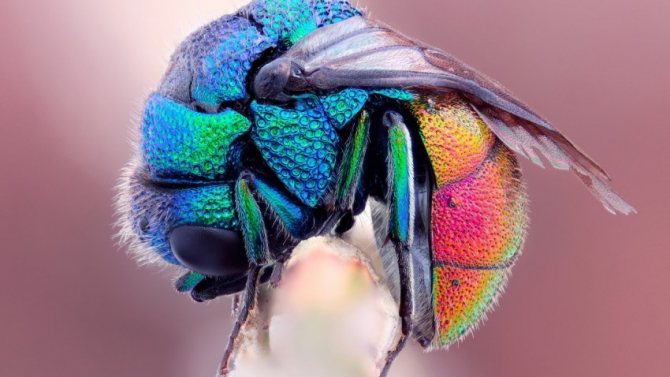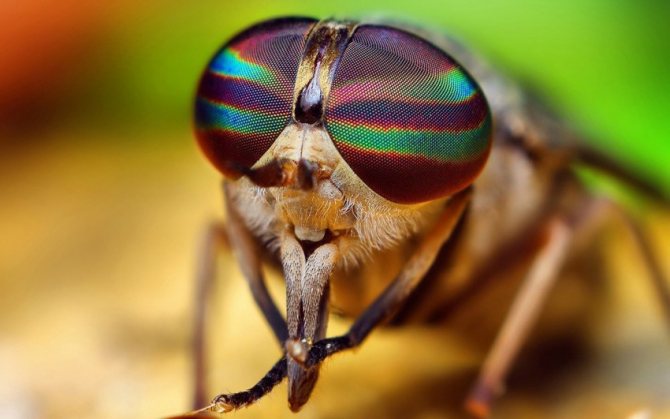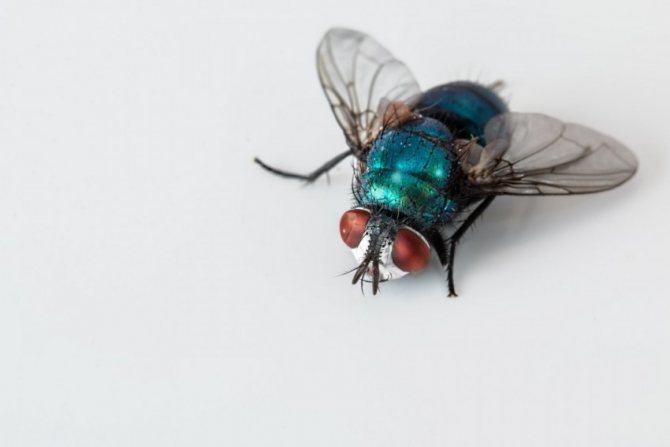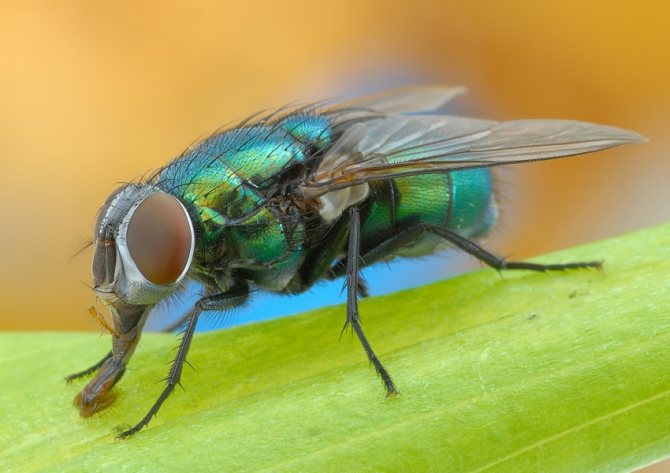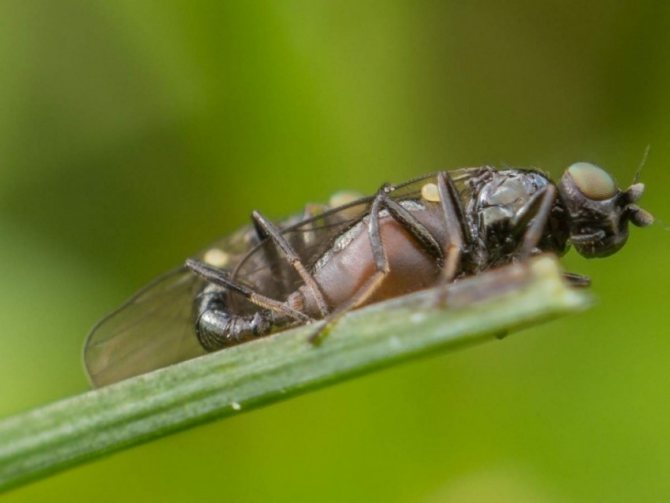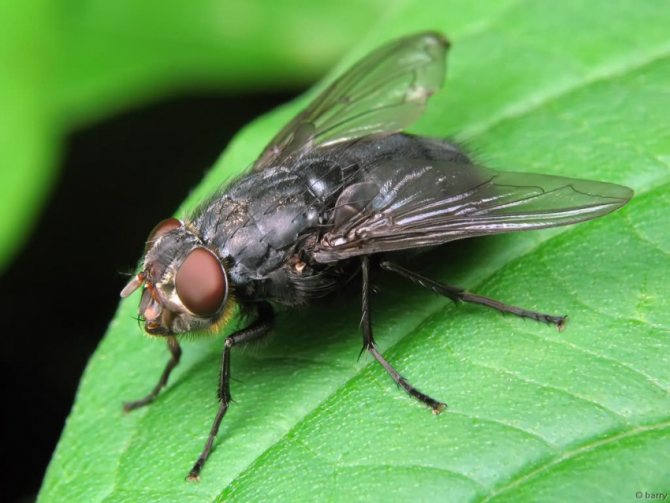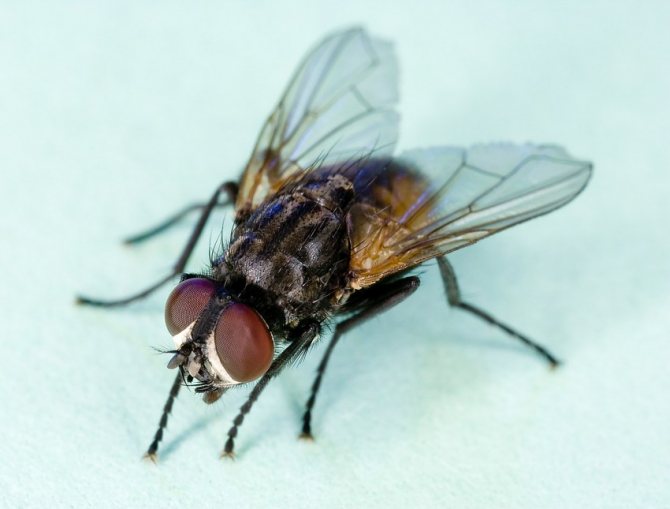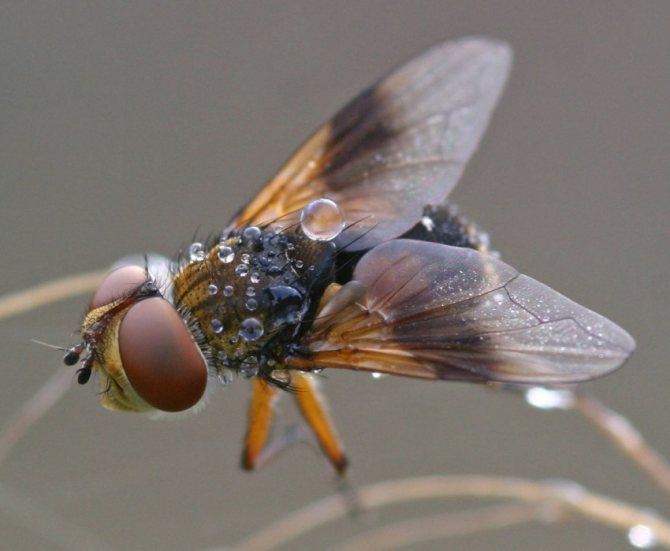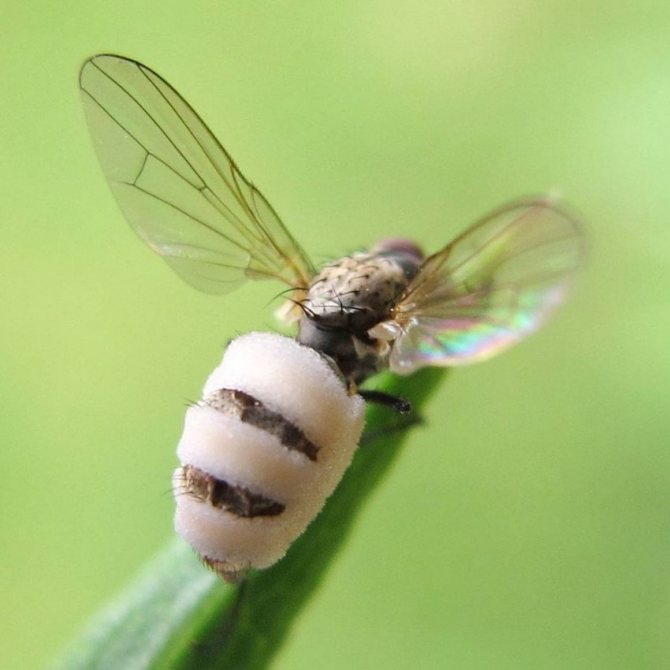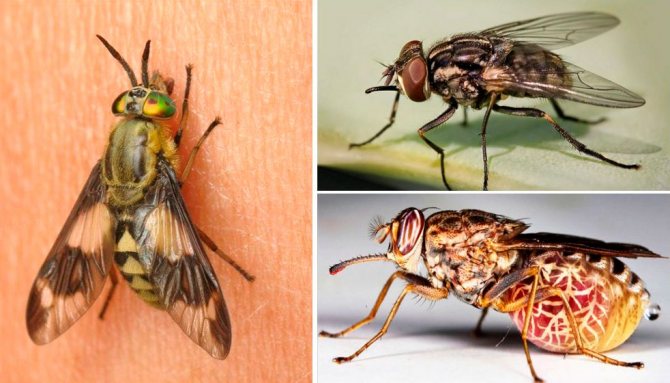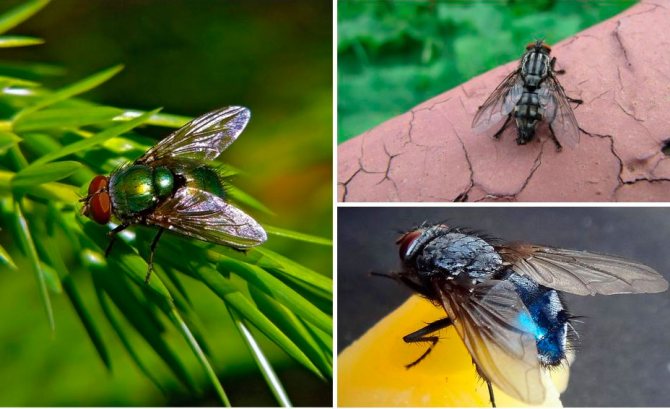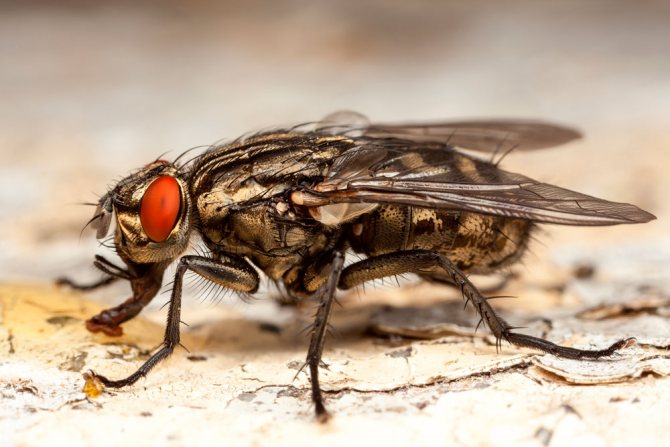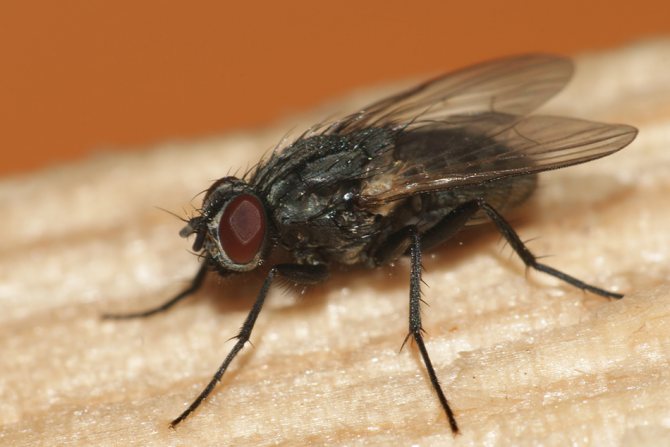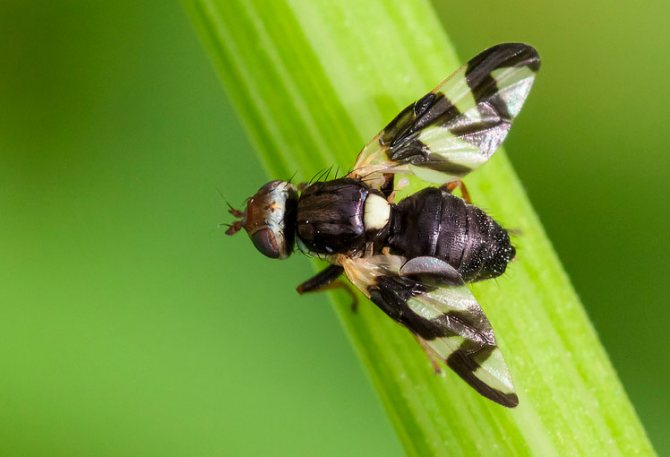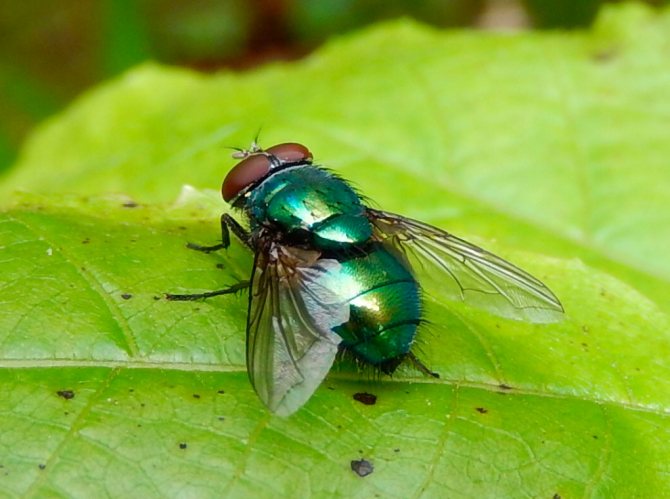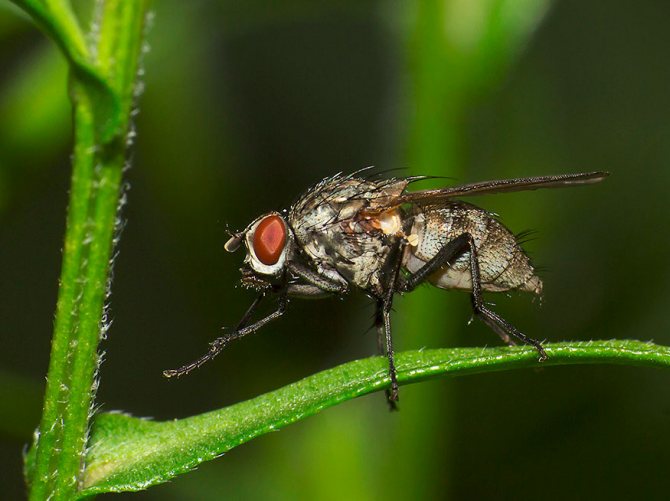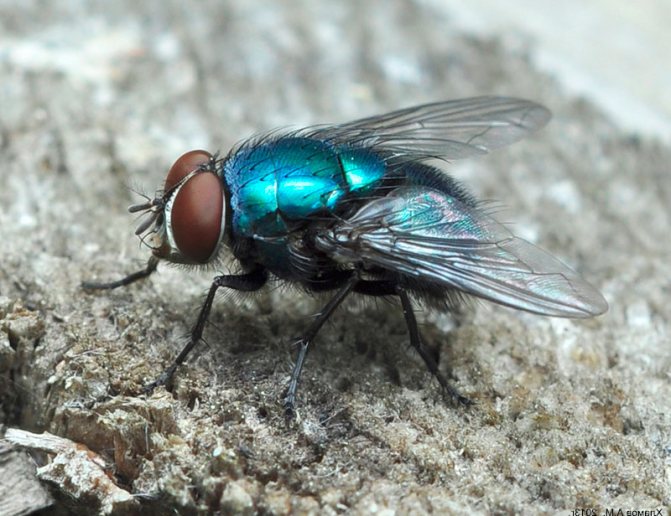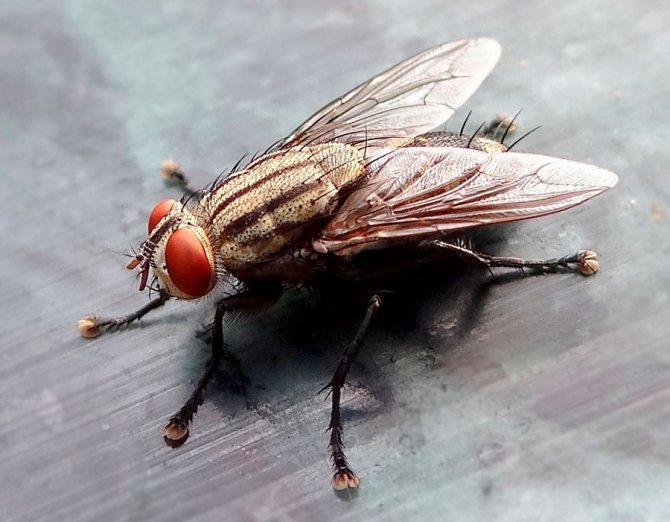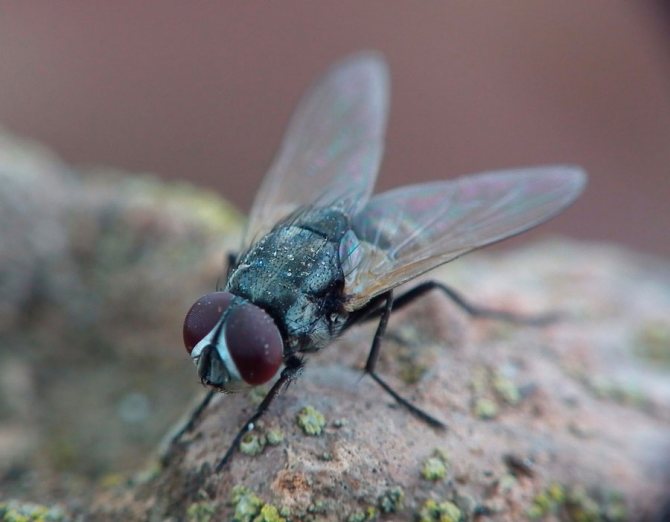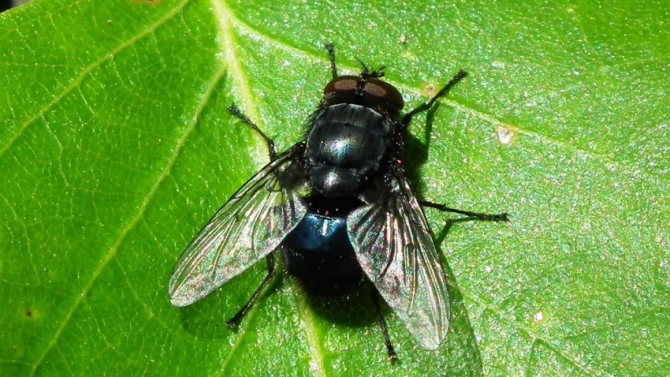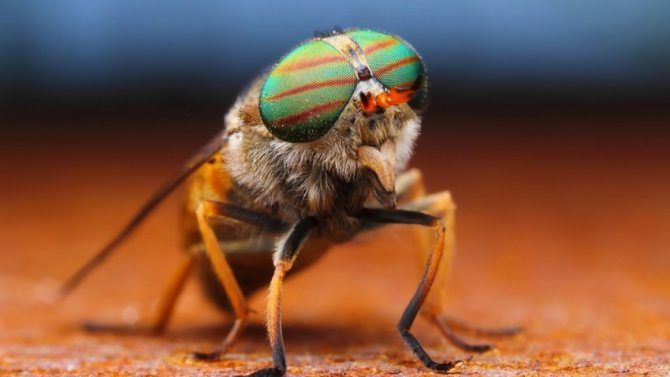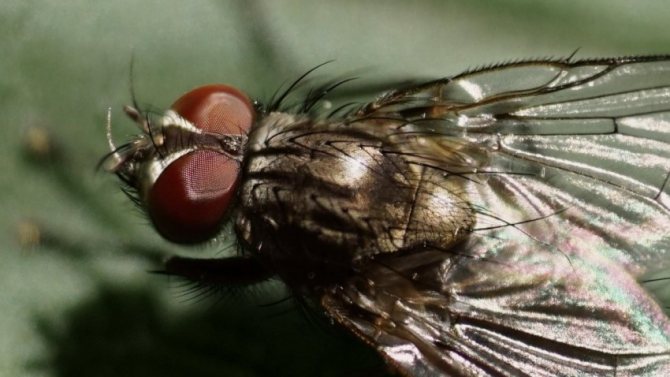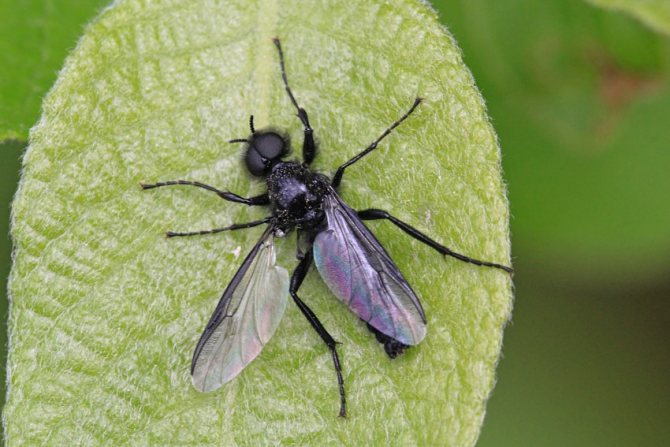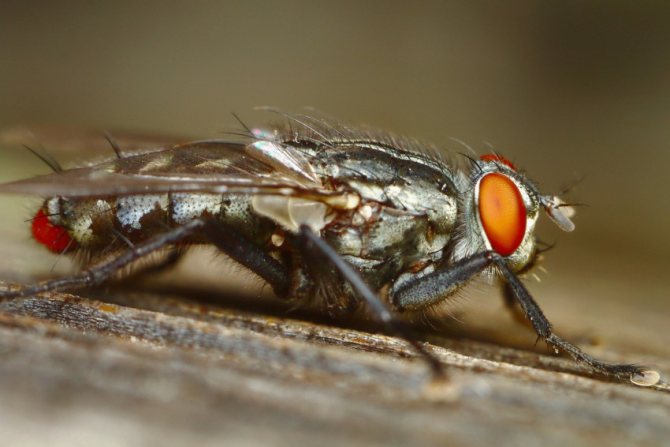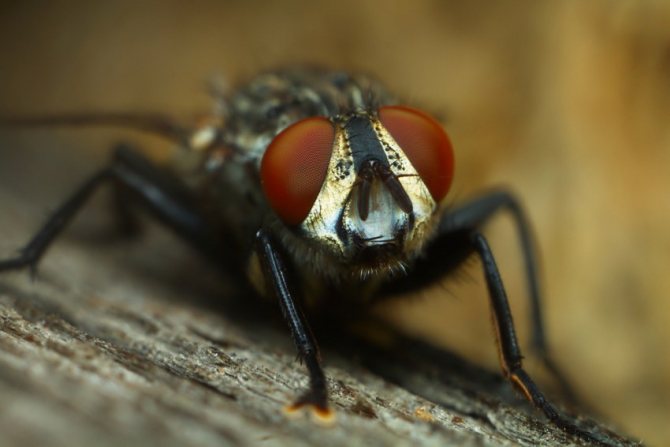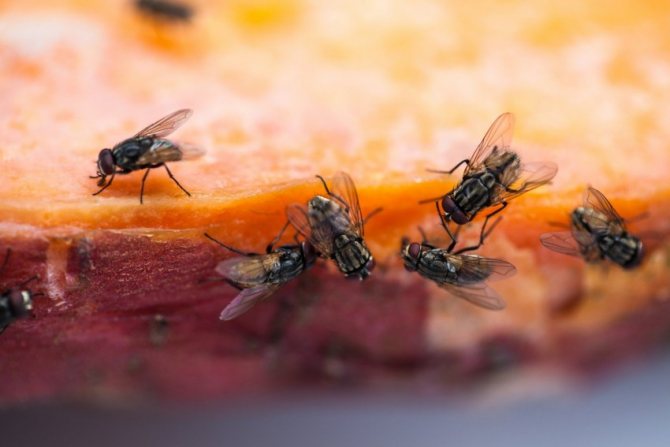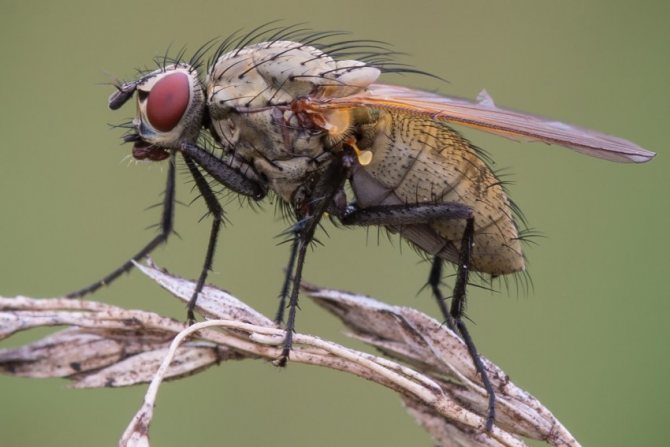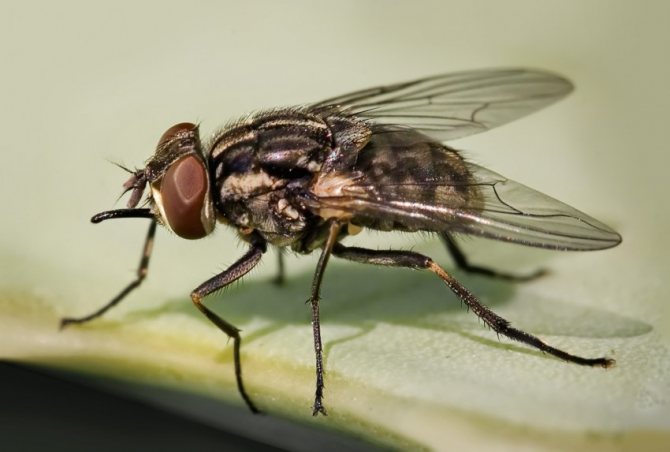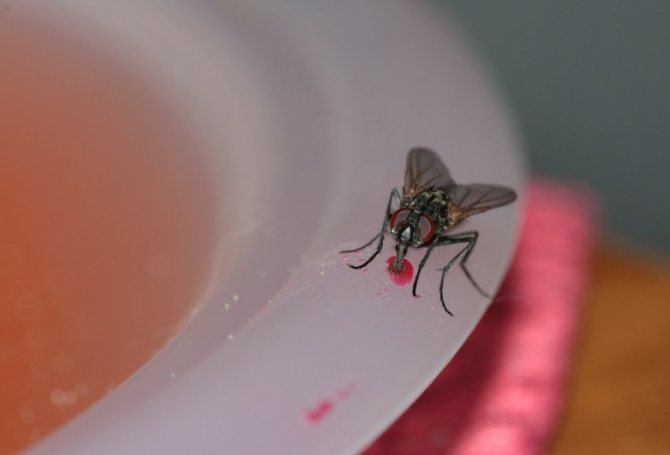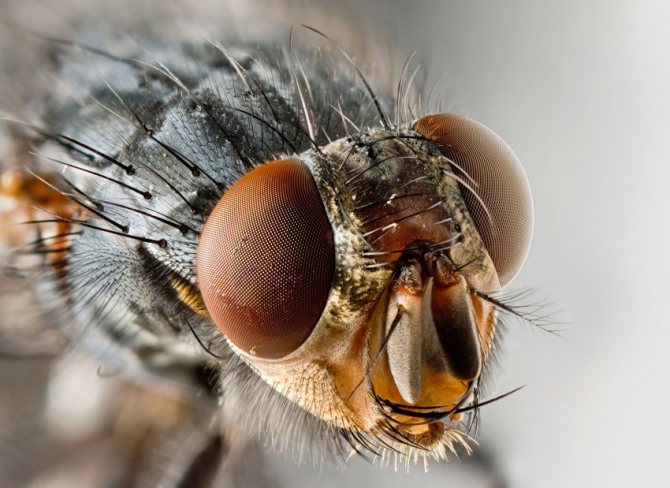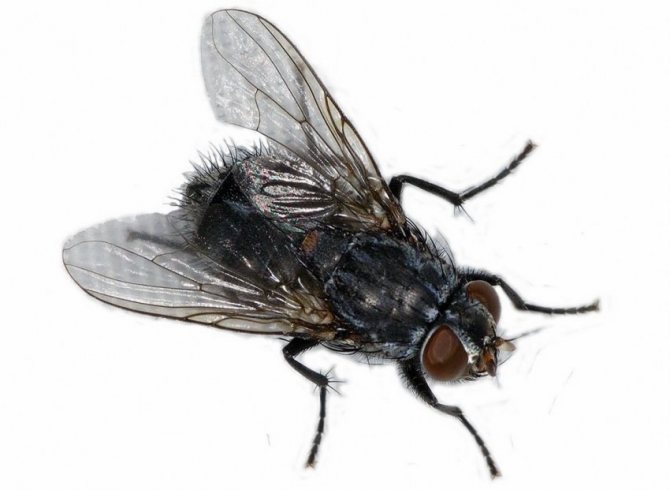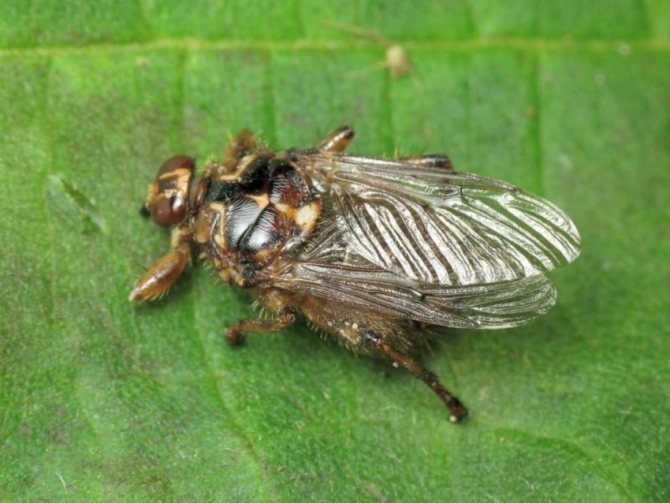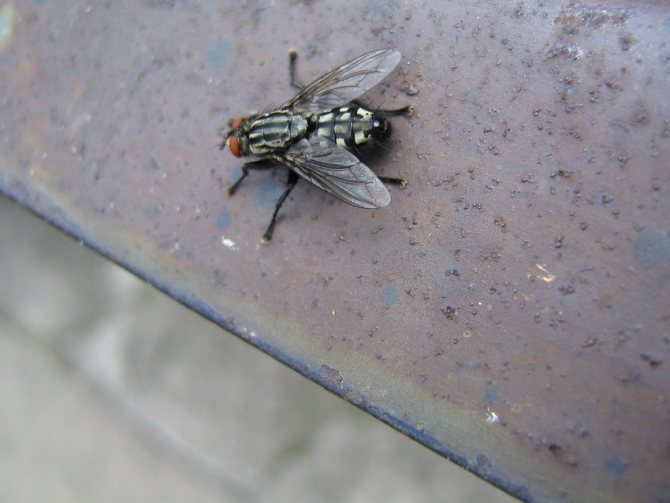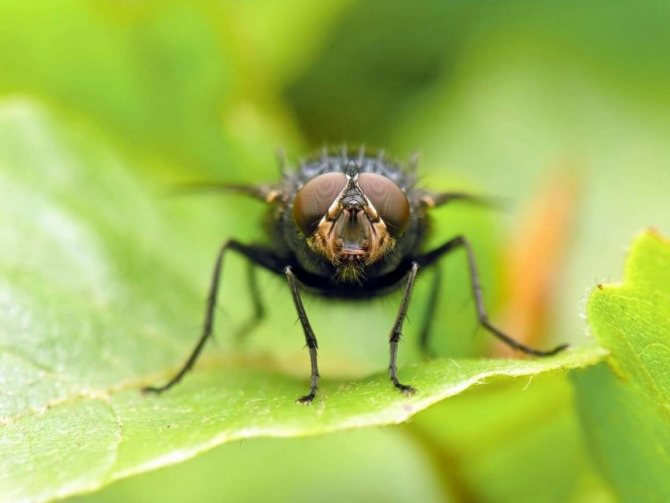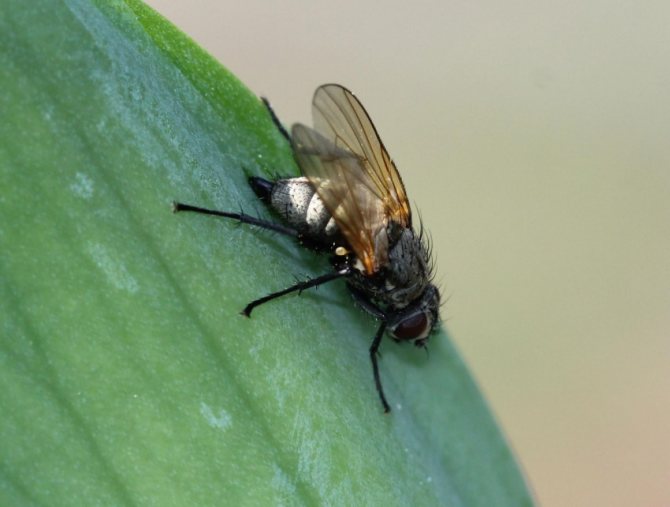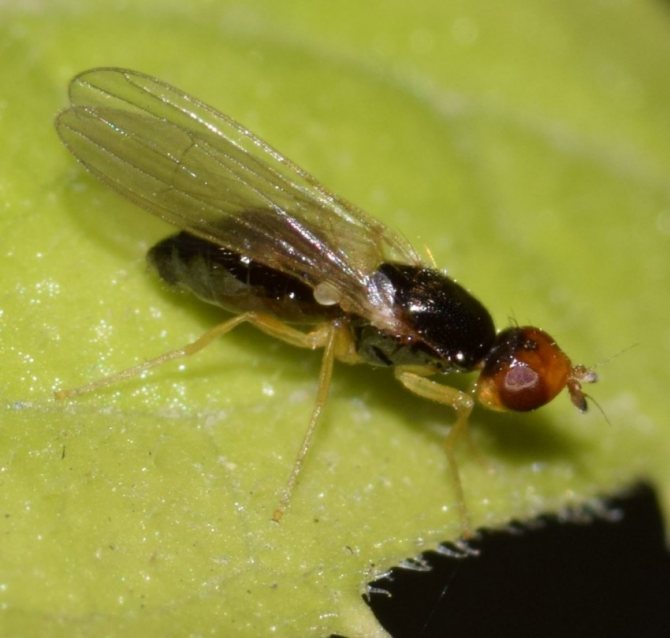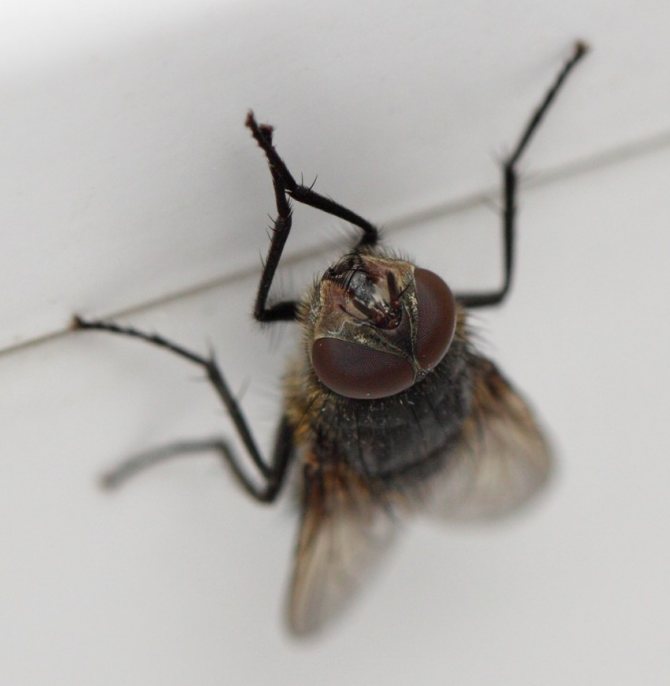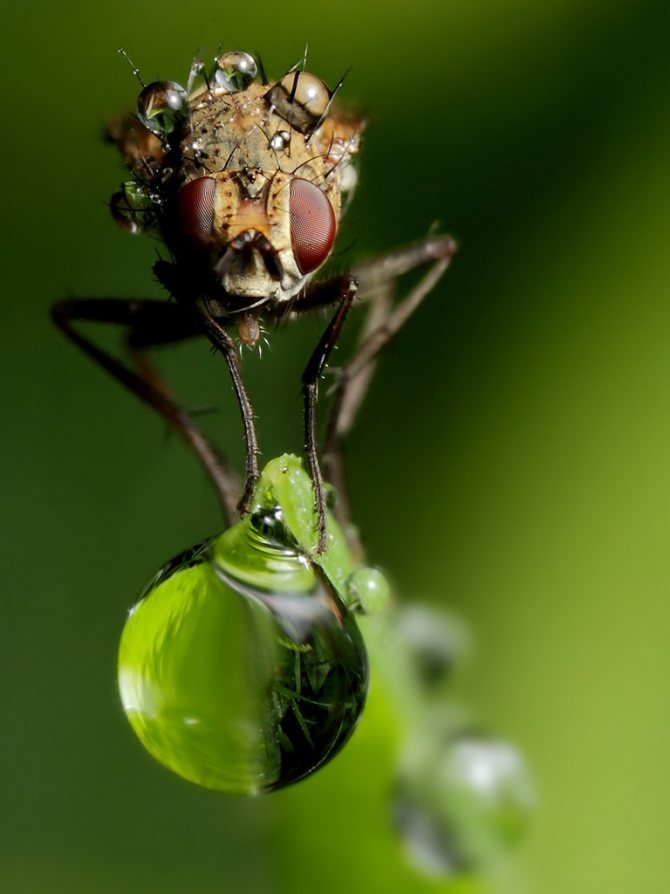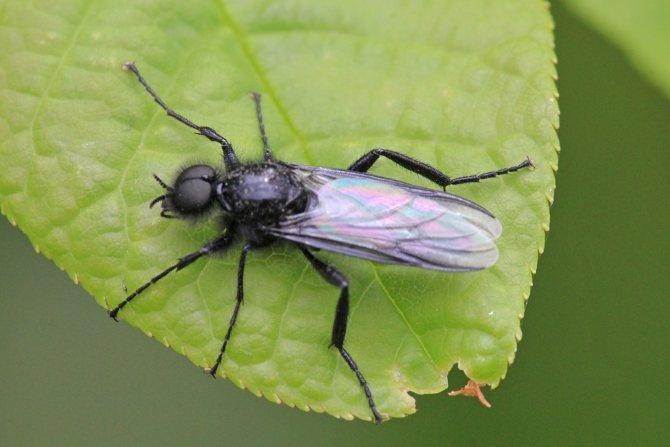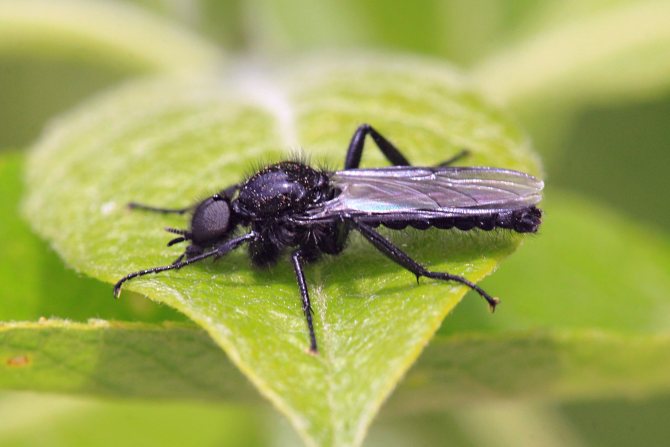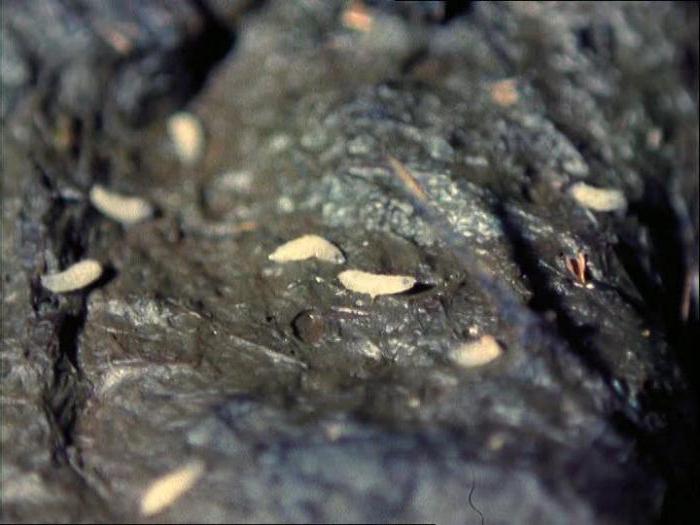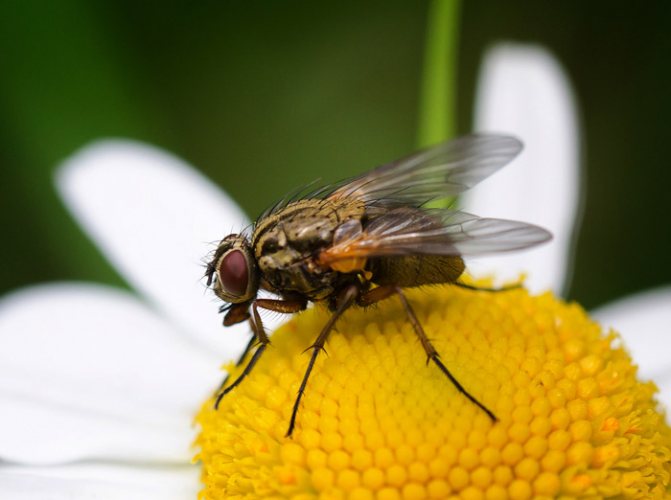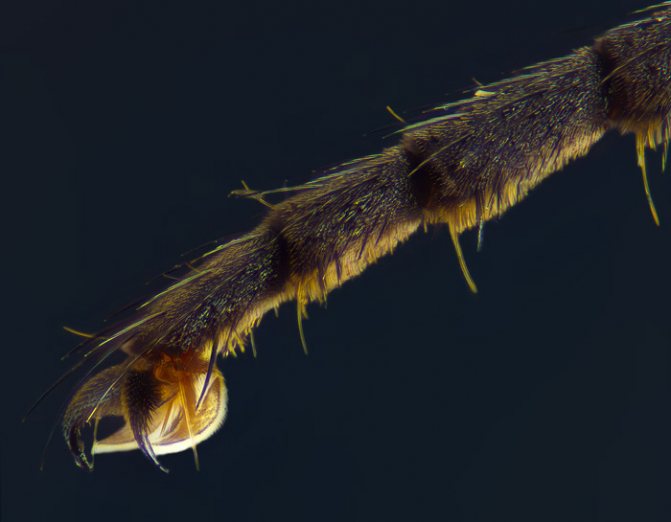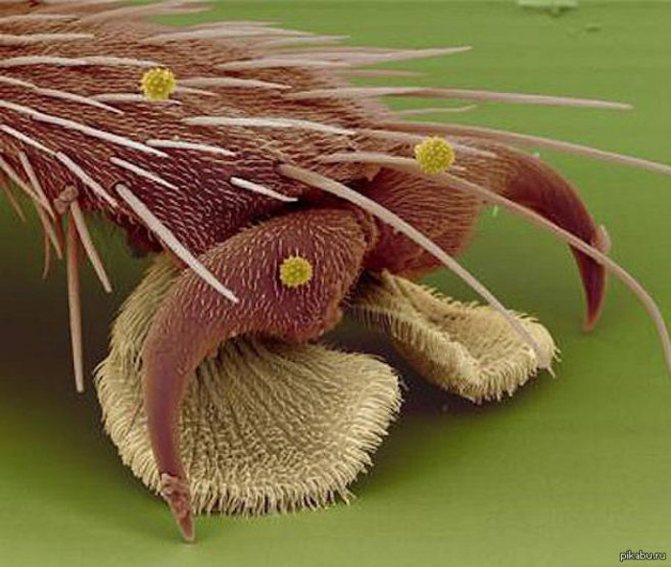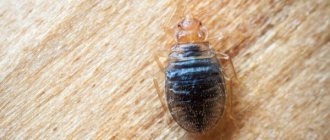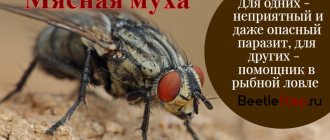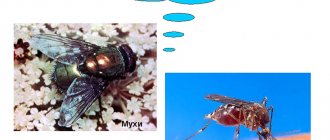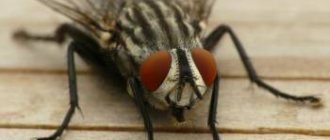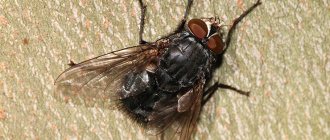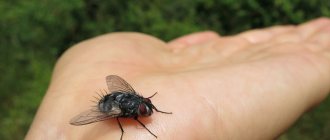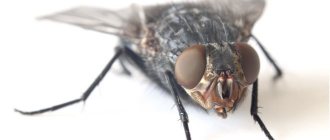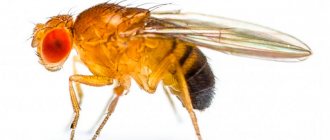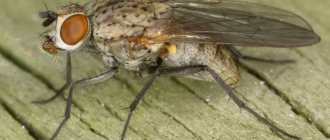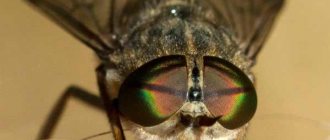Who is a housefly?
Considering this term, it is worth mentioning two points of view. For starters, this is an ordinary person who encounters winged insects and does not go into details. Also worth mentioning is the position of the more enthusiastic person.
So, from the side of a biologist, houseflies are a separate species that have a certain characteristic. In the summer, they live in close proximity to people.
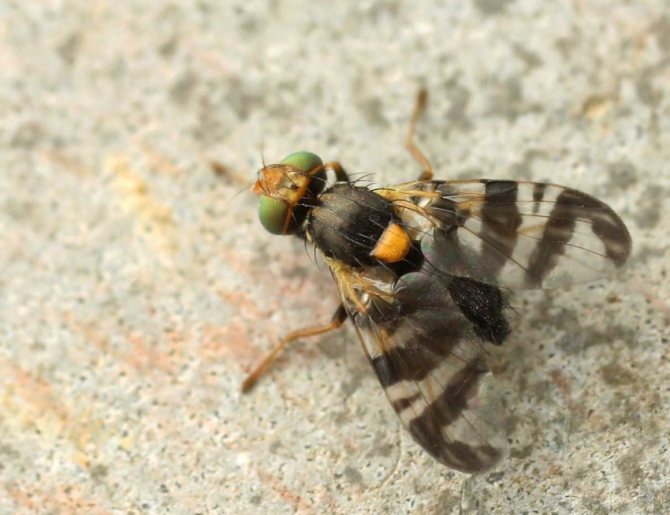
It has a dark gray coloring, large, but not the largest in size. Due to the soft proboscis, a bite is impossible, so the housefly has to eat liquid food. Often attracted by food or life waste.
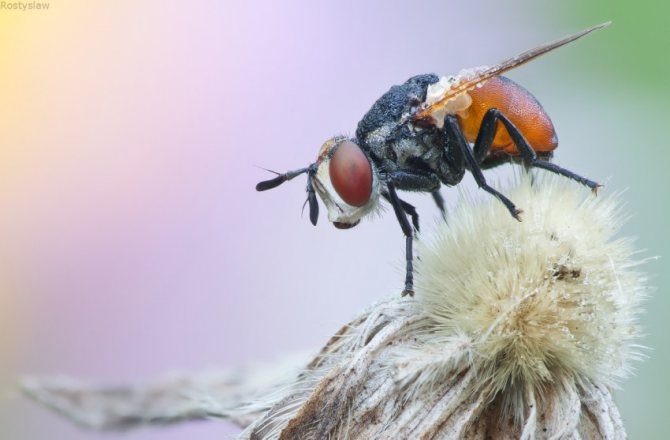

From the side of an ordinary person, any creature with two wings that is in the house can be attributed to a house fly. It is unlikely that anyone is very keen on the presence of a melon, cherry or raspberry fly.
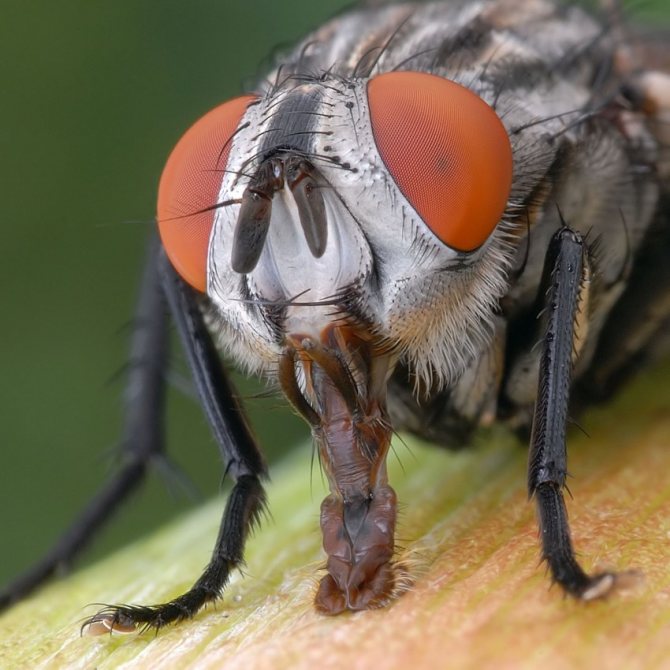

This point of view is not surprising, because there is simply no need to know all types of flies - there are more than 150 of them.
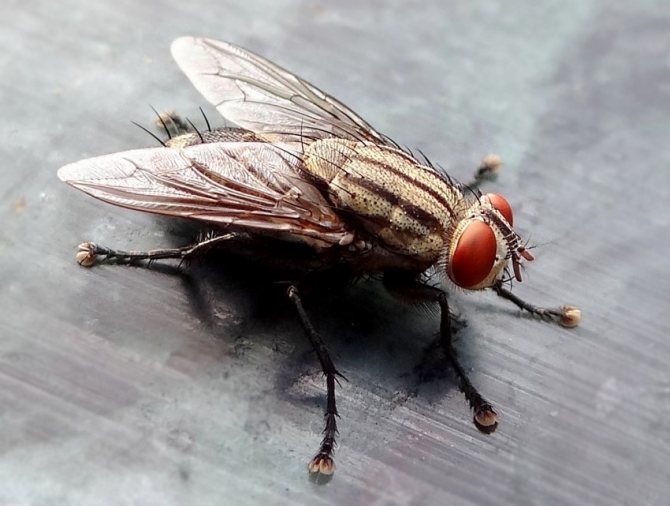

What does it look like
Dung beetle is a red fly no more than 1-1.5 cm in size. The cylindrical body is covered with thick gray or reddish pile, which looks like a kind of "fur". On a small head, large, widely spaced eyes, which have a reddish-brown tint, are clearly visible, as well as antennae antennae. At the base of the wing, only one scale is well developed. On the front limbs of the insect there are long spines, thanks to which it retains its prey during capture.
Useful
Even ordinary flies can be considered useful, since they are orderlies - they destroy garbage, expired products and other residues.
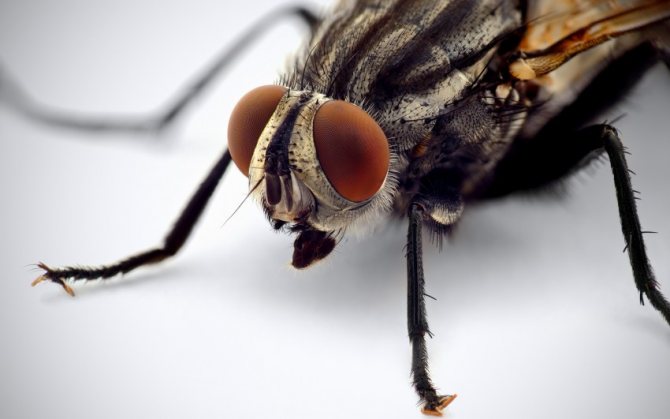

Slightly less common are pollinating flies, such as the bee. But when ingested, it can cause various infections.
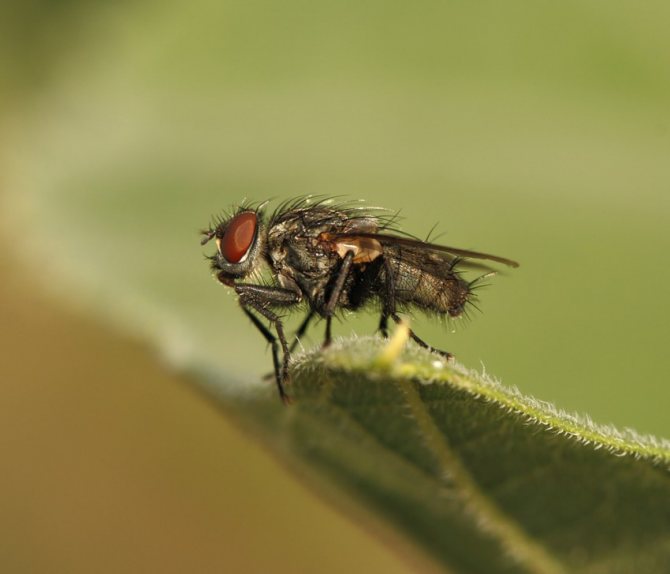

Where dwells
Science knows about half a thousand species of dung beetles, most of which live in the Palaearctic, North America, Mexico. Together with livestock, the insects entered Brazil and South Africa. Up to two dozen species of these insects live on the territory of the Russian Federation.
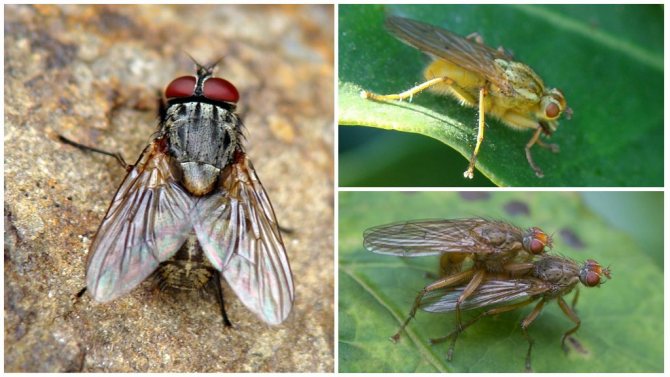

Dung fly
On a note!
The dung fly is a moisture lover: it can be found in low-lying forests, mountain meadows, coastal vegetation, in swamps, peat bogs and even in the southern tundra.
Fly photo
About reproduction
It is almost impossible to meet insects in human housing due to the lack of suitable food in it. On the other hand, quite often, "shaggy" can be found in premises where livestock is kept. Dung beetles flock there in order to find a mate: the male is waiting for his partner on the dung heap. Females also lay eggs in livestock manure, from which larvae appear after a day.
The dung flies give the greatest preference to the manure of pigs and calves feeding on milk, since their feces, unlike horses, retain the required temperature longer. After laying eggs, females go to the world of flowering plants to feast on another victim. And the larvae that appear continue to develop in the compost heap.
Most of the larvae are phytophages, but there are both saprophages and predators. Phytophages develop in the stems of rushes, sorrel, sedges; they also give preference to plants of the liliaceae and reed families.Rye ears often suffer from attacks of gluttonous larvae.
Reproduction and developmental stages
For mating, adult dung beetles choose rooms or places where manure is abundant - a barn, a pigsty. Males arrange competitions, who will be the first to impregnate the female. After mating, she lays her eggs in a pile of manure, where they are warm and protected throughout the day. The hatched saprophagous larvae continue to live in this organic fertilizer, but they feed on the larvae of other insects in the vicinity.
Interesting!
The dung fly prefers to raise its offspring in the waste products of pigs. Their manure stays warm and soft for longer.
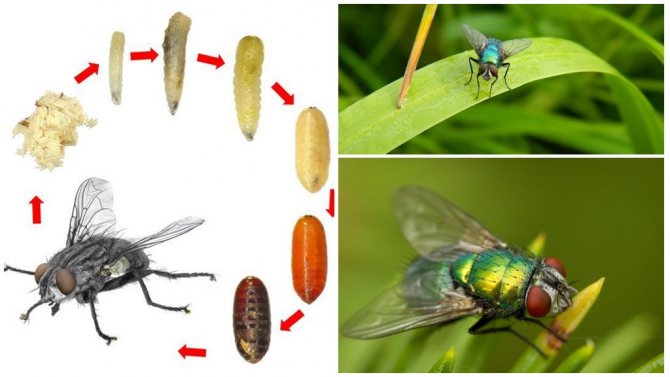

Dung fly
Some types of dung beetles lay eggs on the stems of plants, algae. Most often, a dung female chooses the following plants for her offspring:
- sorrel;
- reed;
- rye;
- lilies and others.
The larvae that appear are called phytophages. They bite into the leaves and make internal passages in them, feeding on juicy pulp. After a few days, the fed-off caterpillars turn into pupae and freeze in this state. Of these, an adult soon appears.
Hippobosca equina
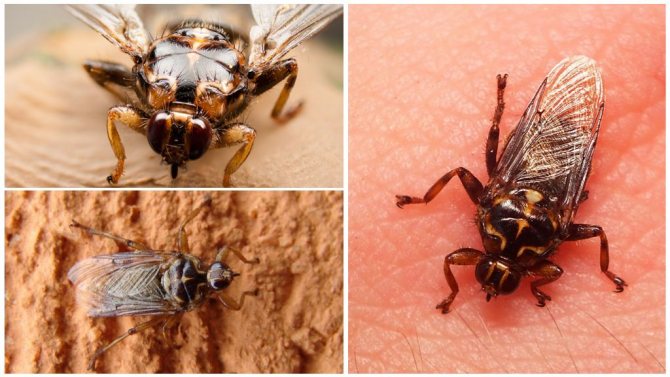

Fly Hippobosca equina or horse bloodsucker
Giant insects include the Hippobosca equina fly or the horse bloodsucker. The representative of this species is distinguished by its large size (body length can be 6-8.5 cm), wide chest and rather strong wings. On a shiny brown body, a yellow pattern on the side of the chest stands out well. The oral apparatus is represented by large, powerful jaws, identical to sharp knives.
Young individuals possess wings, which lose them after attacking the victim. Horses and cattle are usually used as the latter. The insect clings to the tail, belly or thighs of the animal. A fly bite causes skin irritation, which is very uncomfortable. Moreover, only females bite in order to feast on the blood of mammals during the mating season. The rest of the time, the huge fly is harmless, as it feeds on nectar and pollen from plants.
Fly Anatomy - External Structure
The general plan of the structure of Diptera, the skeleton of a fly is the same as that of other insects - head, chest, abdomen. The mouth apparatus, antennae, eyes are located on the head. The chest consists of three segments, with a pair of transparent wings and three pairs of legs. The space in the chest is filled with powerful musculature. The abdomen includes most of the digestive organs, the reproductive system.
On a note!
Flies have pronounced sexual dimorphism, when the appearance and structure of the female differs from the male.
Fly head
Includes organs of sight, nutrition, hearing.
- Oral apparatus. Regardless of the difference in nutrition of many species of flies, their mouth apparatus is represented by the proboscis of the sucking, licking type. A pair of expanded blades of the upper, lower lip comes into contact with food. The fly's jaws are powerful. Numerous tubules converge into the fly's proboscis, at its central point. The mouth apparatus of a fly, which feeds on blood, is additionally equipped with hard, sharp scales, which perform the function of teeth, help to pierce the skin of an animal, a person. The fluid is drawn into the head using a pharyngeal pump.
- The eyes occupy most of the head. They make up a complex system that was taken as the basis for the development of a modern photo camera. They consist of many simple eyes that look like a facet mesh from the outside. The insect gets a comprehensive yet mosaic of objects. Each eye includes several hundred, thousands of facets. The housefly has about 4 thousand of them. Many species have 3 simple eyes located on the crown of the head. This structure allows you to instantly capture the movement, but does not give a complete picture of the image.
- Antennae. Peculiar antennas serve as a reference point.They help to capture odors, determine the direction of movement. In the process of evolution, they have changed, there are differences in males, females.
Interesting!
Males always have larger eyes than females. This allows them to react faster to movement, better assess their surroundings. Females have a more developed olfactory system, with the help of which she finds a favorable environment for laying eggs.
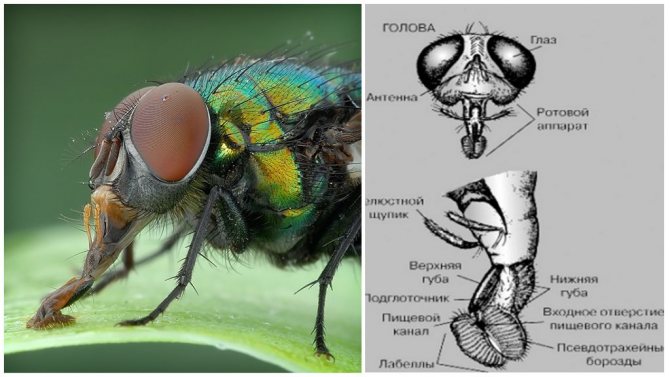

Fly head structure
Chest
Consists of three segments - anterior, middle, metathorax. The fly's bones and the main part of the musculature provide flight, so the middle part is most developed. How many legs does a fly have - 3 pairs. Each consists of 5 parts, has its own powerful muscles. The structure of the fly's paws ends with claws, suction cups, which allow the insect to stay on a vertical, horizontal surface and even upside down. When walking, the soft pads are compressed, a sticky secret is released. This feature helps the flies to stick freely and mix over the window glass and smooth surfaces.
On a note!
The paws are one of the main senses - the sense of smell. With its paws, the insect determines the taste of food, analyzes the quality. After a few seconds of analysis, it starts feeding or flies away.
Fly wings
The upper ones are well developed, transparent, membranous. The back pair is deformed into an appendage - halteres. Maintain balance in flight, allow you to hover in the air, and emit a buzzing sound. Thin wings are reinforced with cylindrical veins.
Interesting!
In the process of flight, the insect can turn off one or the other wing, change its trajectory abruptly, make complex maneuvers, and take off without preliminary acceleration. The structure and abilities of the insect were taken as the basis for many flying structures in airplanes and helicopters.
Abdomen
It has a cylindrical shape, elongated, consists of 10 segments, includes fly organs responsible for reproduction, respiration, nutrition and other important functions. The elastic chitinous cover expands as food is received, during pregnancy. Therefore, the weight of the fly changes depending on these conditions.
Interesting!
A common house or housefly weighs 12 mg; during pregnancy, the weight increases to 15 mg. To the same indicator, weight can increase after a meal. The male is smaller, weighing about 12 mg. One gram can hold about 80 of these insects.
The face of a fly can be easily examined under a microscope, but even with careful examination with the naked eye, an elongated mouth apparatus, large eyes of green, red, yellow, brown, blue are visible. The ears of a fly are located on different parts of the body, helping to capture air vibrations, ultrasound.
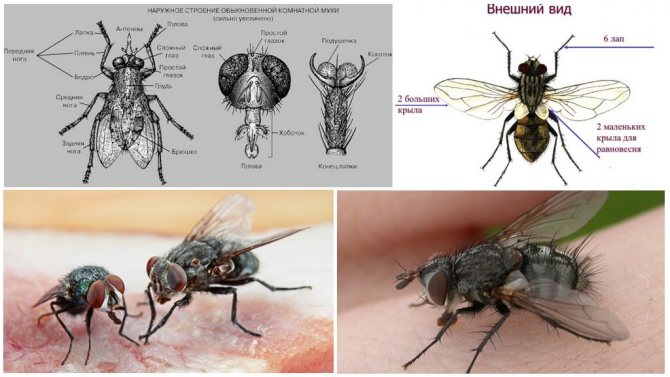

Fly structure
Reproductive system
The genitals are located in the abdomen. In males, they are represented by testes, in females - by eggs, accessory glands and ducts. The structure of males is distinguished by the presence of special "captures". To raise offspring, each female lays 70 to 150 eggs. Some species are viviparous (meat and cadaverous).
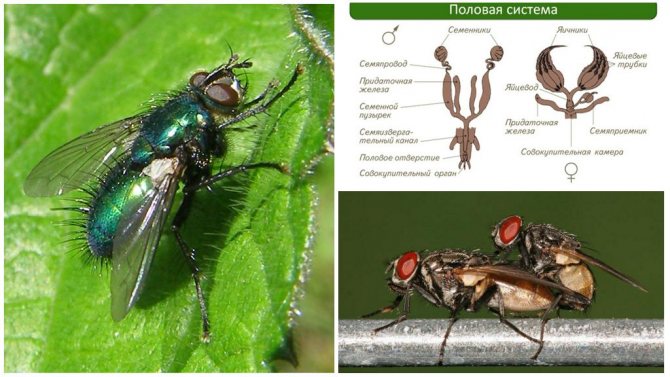

Reproductive system of flies
The penises of fly males were investigated by Charles Darwin, who was surprised at their complex structure and the presence of outgrowths and hooks. Modern scientists have found that their genitals have the ability to twist up to 180 °, and some species of flies can rotate it up to 360 °. This is necessary for the convenience of pairing, so as not to turn upside down.
Complications
At first glance, it may seem that the saliva of a fly entering the bloodstream will not cause complications. In fact, this is not the case. Autumn burner is a carrier of:
- sepsis;
- anthrax;
- tuberculosis;
- poliomyelitis;
- helminths;
- typhoid;
- fever.
We suggest that you familiarize yourself: After how many days lice hatch from nits: all about the life of lice
These diseases lead to serious consequences. A horsefly bite is not as dangerous as a burner. However, a person may experience:
- severe allergic reaction;
- swelling of the head and further asphyxia (rare);
- parasitic invasion.
The entry of tsetse saliva into the bloodstream is the most dangerous. Insects are carriers of sleeping sickness. The victim over time:
- the work of the nervous system is disrupted;
- convulsions appear;
- speech becomes slurred.
You can save a person if you diagnose sleeping sickness in the early stages. Therefore, it is important to seek qualified assistance in a timely manner.
Internal structure
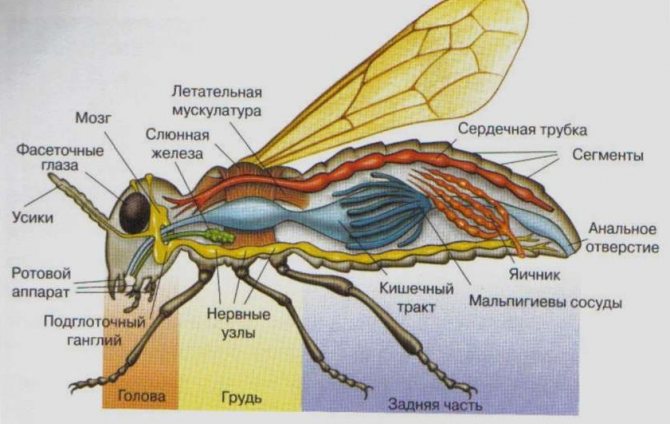

The features of an insect include its internal structure. Many people are interested in how a fly breathes and whether it knows how to think. To answer these questions, you need to consider:
- digestive system;
- reproductive system;
- other organs.
Reproductive system
The genitals are located in the abdomen. Like other living things, they consist of ducts, accessory glands, eggs or testes, depending on the sex of the insect.
External appendages differ depending on the type of Diptera. Flies lay 60 to 160 eggs. Some types of winged pests are viviparous. They give birth to maggots.
Digestive system
The abdomen contains most of the digestive organs:
- water tubules;
- intestines;
- goiter.
In fact, the insect lacks a digestive organ. Food is digested before it enters the abdomen. The insect secretes during the absorption of food. She also digests "food".
Other organs
Insects do not have such complex systems as humans. The brain contributes to the coordination of movement. At the same time, an organ such as a reflex arc is responsible for reflexes. The brain unites several thousand neurons.
Important: the fly lacks intelligence and the memory stores information only for the last 3 seconds.
In the body of the insect there are 10 pairs of spiracles, which allow the pest to breathe. Oxygen is supplied to each organ through its own spiracles.
Blind
There are 4400 species of blindflies in the world. Their size ranges from 6 to 30 mm. The largest member of the family is the horsefly (Tabanus chrysurus). Its body length is 3 cm.
On a note!
Representatives of the Tabanus genus also live in Russia.
Only females bite in horseflies. These large flies can be potential carriers:
- anthrax;
- trypanosomiasis;
- tick-borne encephalitis;
- tularemia;
- listeriosis;
- other blood-borne diseases.
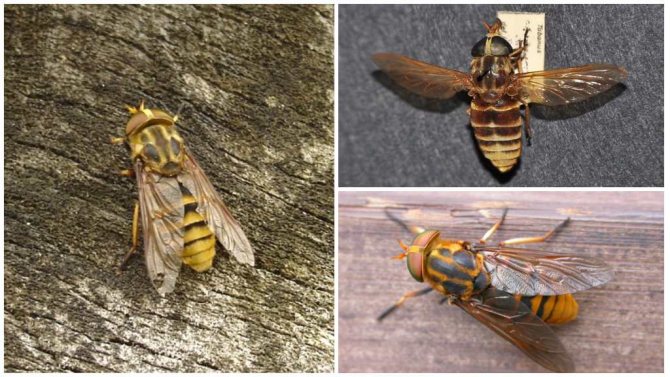

Horsefly
On a note!
Horseflies are habitual inhabitants of forests and meadows, although they require a humid water environment for reproduction. But these big flies don't make much of an impression on people.
The body color of horseflies is yellow, gray or brown. The head is large with large eyes. In living individuals, the eyes shimmer in different colors, in the dead they become black. Some species have 3 extra simple eyes on the crown of the head. In other species, only a tubercle remained from the extra eyes. In females, a matte frontal strip is located between the eyes. The oral apparatus of the female is of the piercing-cutting type.
Insect description
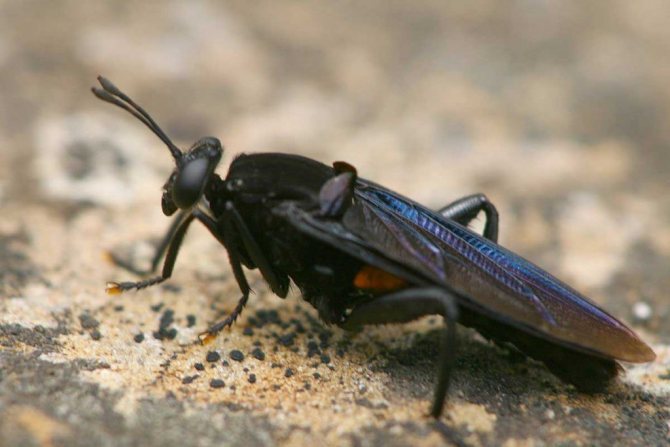

The largest fly in the world is Gauromydas heros, or as it is also called, the fighter. Outwardly, the Diptera resembles a huge black wasp. The insect reaches 60 mm. In this case, the wingspan is 120 mm. Body color from dark brown to black. There is an orange band between the chest and the elongated abdomen.
The fly-fighter, like other representatives of Diptera, has large, faceted eyes of a dark shade. On the back of the insect there are large wings with a characteristic pattern. Despite their transparency, they have a light brown tint.
The life cycle of a giant fly consists of 4 stages:
- eggs;
- larvae;
- pupae;
- an adult.
It is difficult to say exactly how many eggs a fly lays, since it is still being studied. It is known that the larvae are most often found in anthills. They feed on insects that hunt for ant meal.
The female feeds only at the larval stage. The insect is gaining enough nutrients to breed new offspring in the future. As for the males, they feed only on nectar.
Important: despite its huge size, the "giant" is able to develop high speed and when it collides with a person, a bruise remains on the skin.
Respiratory and digestive organs
The structure of the respiratory system is very different from that of a human. How a fly breathes can be explained as follows. The fly has no blood. She inhales air through holes located on the sides between her head and the back of her torso. Each "nostril" passes into a tube, which forms a network with air inside the body. Such air vessels supply oxygen to all other organs, that is, the heart of a fly is the same thin tube, periodically contracting and pushing the air inward.
The digestive system of these insects is even more interesting. Their main diet consists of human food debris and organic matter. In the mouth of a fly, saliva is secreted, which contains specific enzymes that can dissolve tissues and solids. First, with the help of the proboscis, the fly injects saliva into the food it finds and waits for its action. After the food turns into a slurry, the insect begins to lick it with its mouth. After saturation, the insect begins to defecate frequently - almost every 5-15 minutes. It regurgitates the digested contents of the stomach, leaving small black discharge on various objects, dishes and food.
What danger are insects
An insect bite does not go unnoticed. The person exhibits the following symptoms:
- severe itching;
- the appearance of myiasis;
- pain;
- nausea;
- vomiting;
- the temperature rises.
These signs appear if an autumn burner or horsefly was fed with blood. If the bite was made by a tsetse fly, the person has:
- reddish nodule at the site of the bite;
- a rash appears on the skin;
- in some cases conjunctivitis appears.
The incubation period does not cause serious consequences, but if you do not take action, sleeping sickness will kill a person.
Fly control methods
Pyrethrum insecticides are best treated last. The fact is that feverfew is very toxic, to work with it, you must observe such precautions as a respirator and gloves, in addition, it is necessary to protect exposed skin. The use of such a product can affect pets, as well as plants, so you must strictly follow the instructions and take into account the proportions.
In this case, the flies will die after the first spraying, but the larvae and eggs have increased endurance, therefore, in any case, more than one treatment will be required.
Manure control methods include:
- removal and destruction of affected leaves;
- growing plants under a canvas that prevents the entry of flies;
- regular cleaning in pens where livestock are kept.
Also, don't forget about fly-killing methods like regular sticky tape. Stickers suspended in the barn will be able to control the number of insects for some time. An effective way to combat them can be laurel oil, which needs to be rubbed with window frames, as well as doorways in the corral. The smell of laurel oil repels dung beetles, as well as many other pests.

